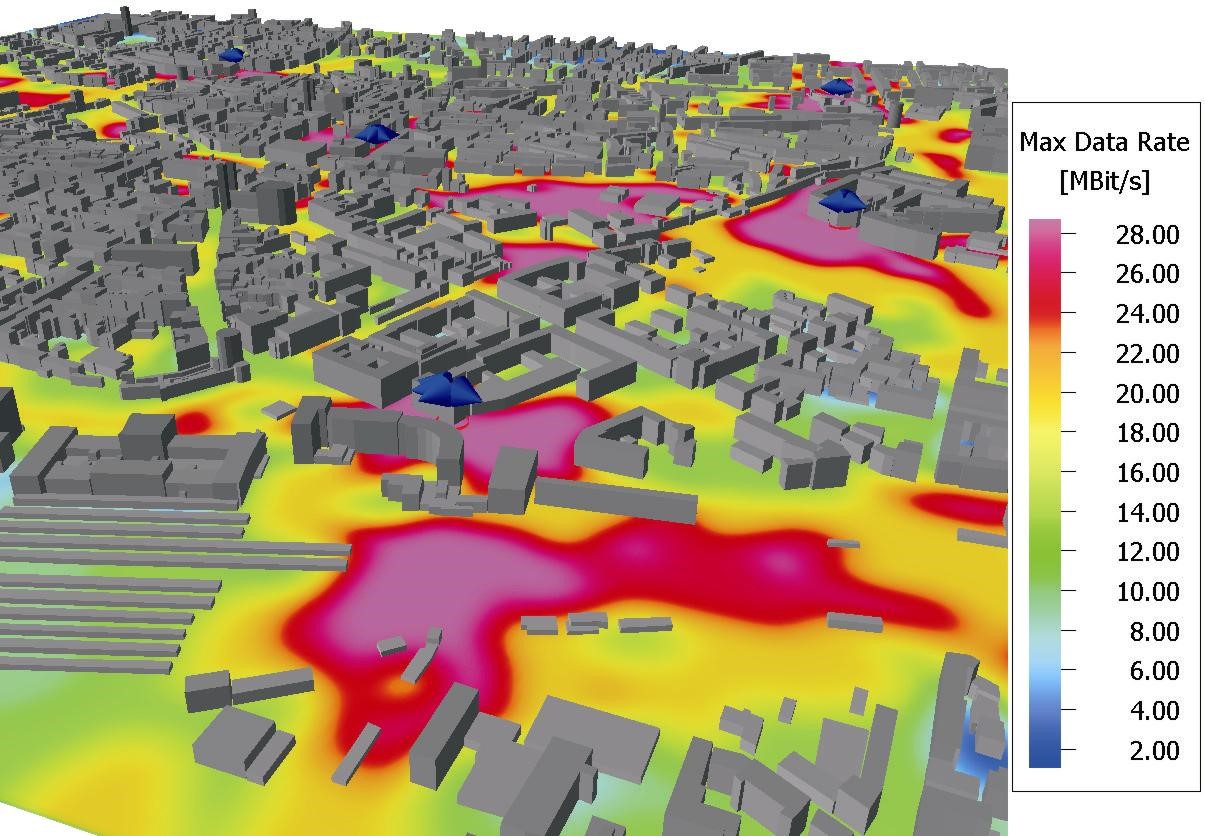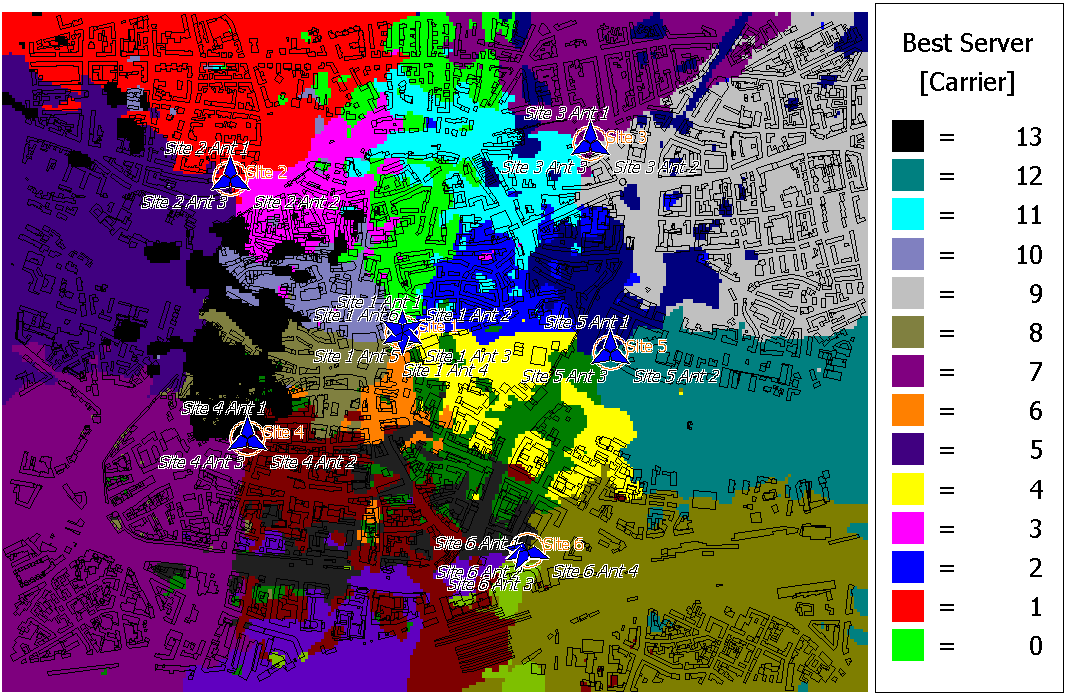Network Analysis for Mobile Communication
Use network analysis for the planning of the locations of base stations.
Network analysis builds on a propagation analysis. In addition to the usual input for a propagation analysis, you also specify an Air Interface, for example, whether you use CDMA or OFDM, with all relevant details concerning carriers, transmission modes, duplex mode. Important additional output is signal-to-noise-and-interference ratio (SNIR). One important contributor to SNIR is that multiple base stations (usually not the nearest neighbours) may have to use the same carrier.
Network analysis is instrumental in planning the locations of the base stations. One of the standard results is a map of which transmitter serves which area, and, for any receiver location, the number of transmitters, carriers and sites can be received. The latter is instrumental in visualizing hand-over options.
From the maps of received power and SNIR, more results are derived: best server, cell assignment, maximum achievable throughput, coverage probability, as well as data rates and other quantities for particular transmission modes.

